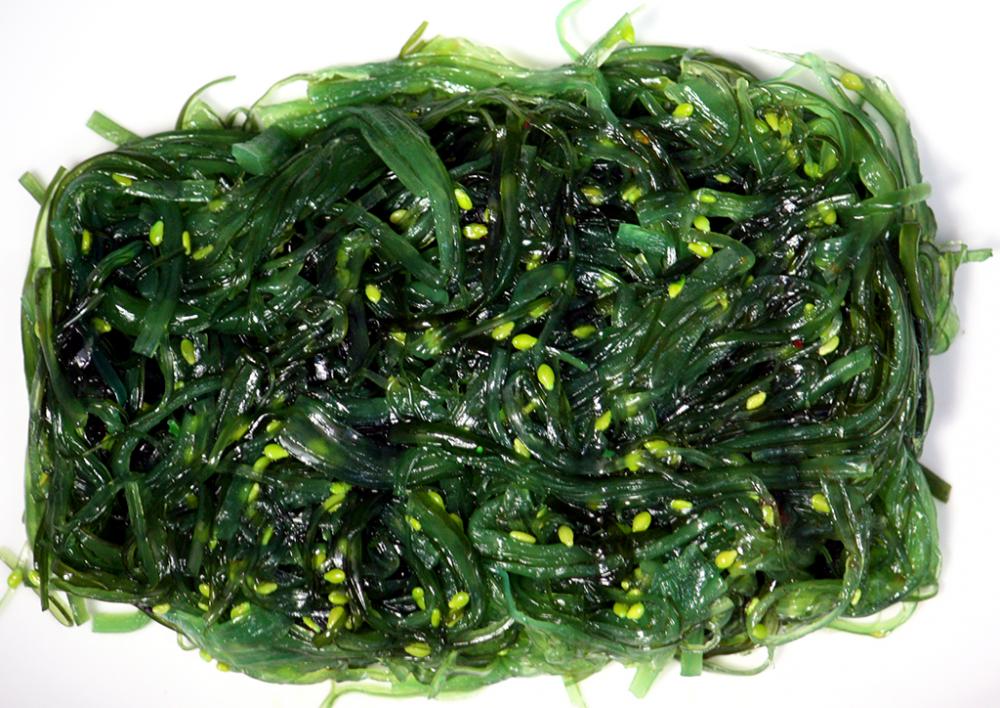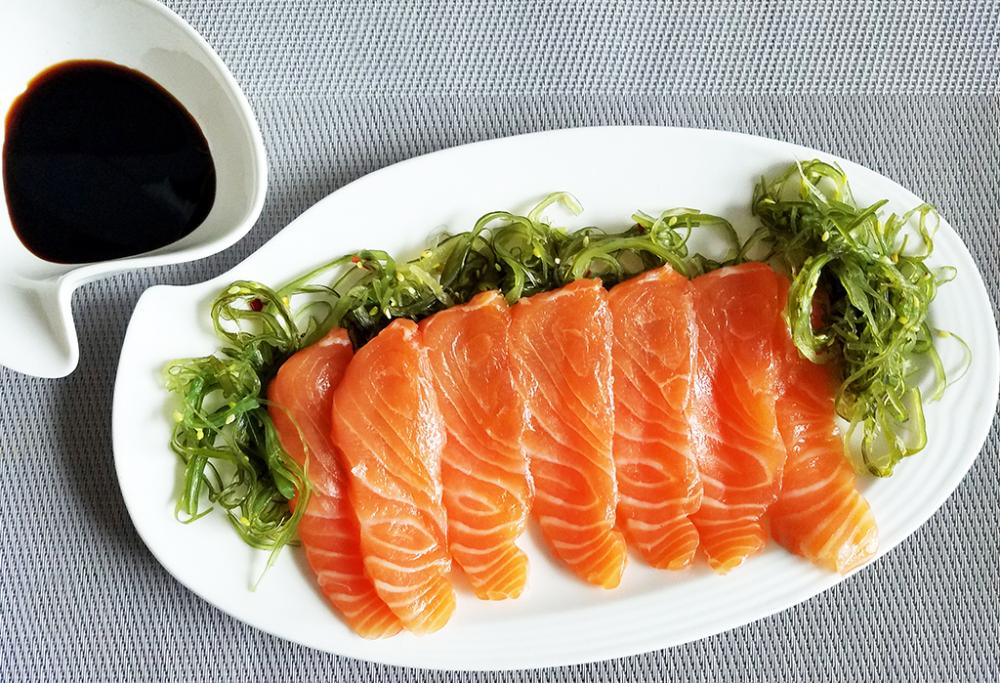17. 裙带菜 (qún dài cài), Undaria pinnatifida – wakame
Another seaweed. Although wakame is often considered to be Japanese, only that name is. The name was adopted from Japanese into English in America sometime in the 1960s along with the briefly faddish macrobiotic movement. In fact, this seaweed is native to China, Korea, Eastern Russia and Japan. In China, it is 裙带菜 (qún dài cài). That said, it is often mislabelled 海草 (hǎi cǎo), meaning ‘seagrass’.
This preparation of what is actually a type of kelp is lightly pickled in rice vinegar with sugar, salt and sesame oil for a brief time (what Fuchsia Dunlop calls ‘taking a shower’ pickling) and is served as a side dish. I particularly like it with sashimi or sushi.
Before I’m told that sashimi and sushi are Japanese and not Chinese, may I point out the Chinese have been preparing and eating raw (and pickled) fish for millennia. Also, even the Japanese recognise that the concept of sushi was originally Chinese, although Japan did take over and develop it in their own way later.






